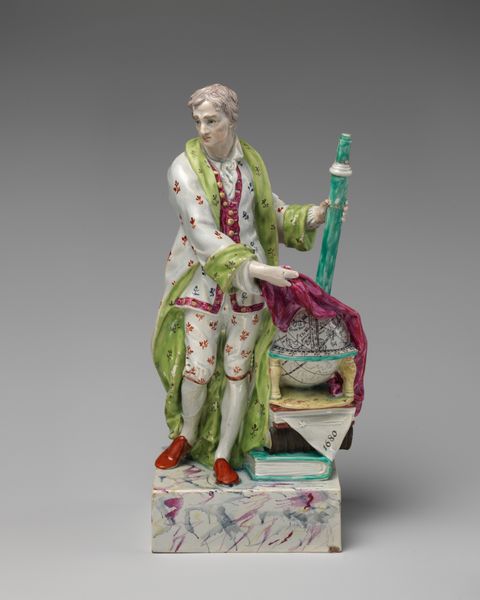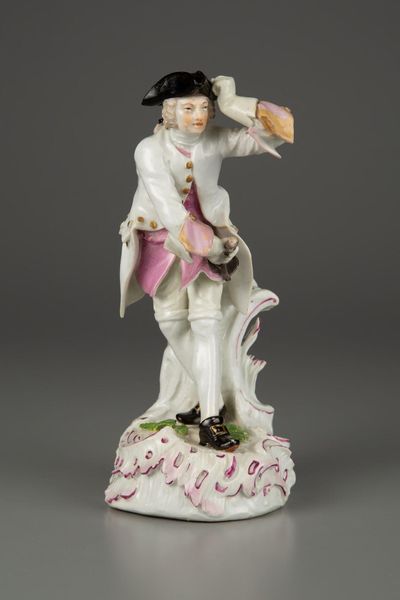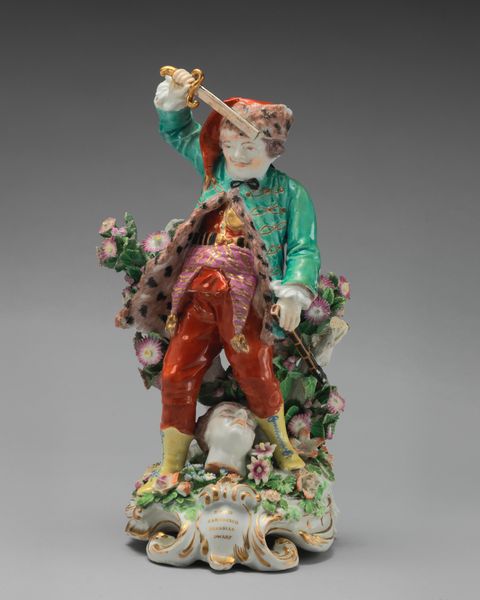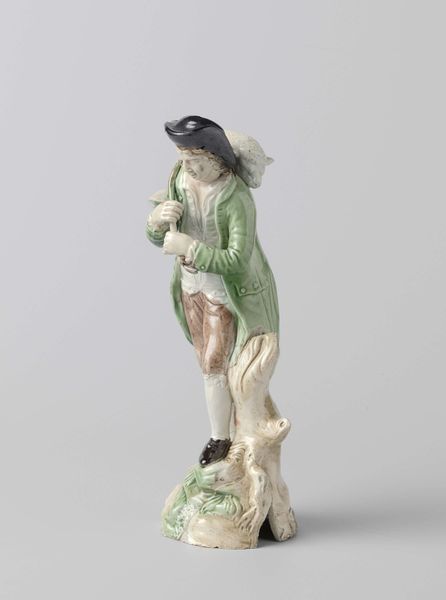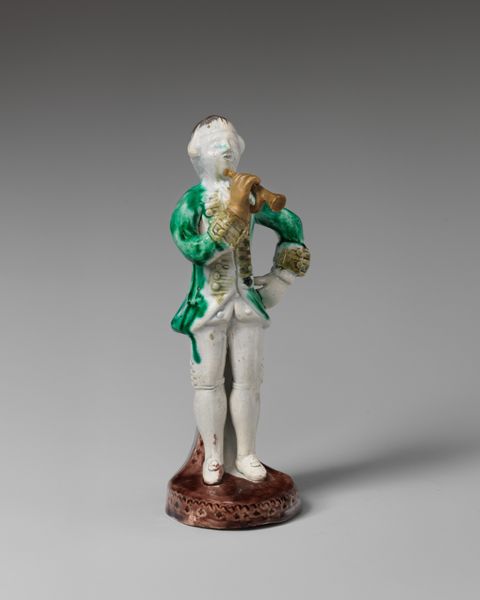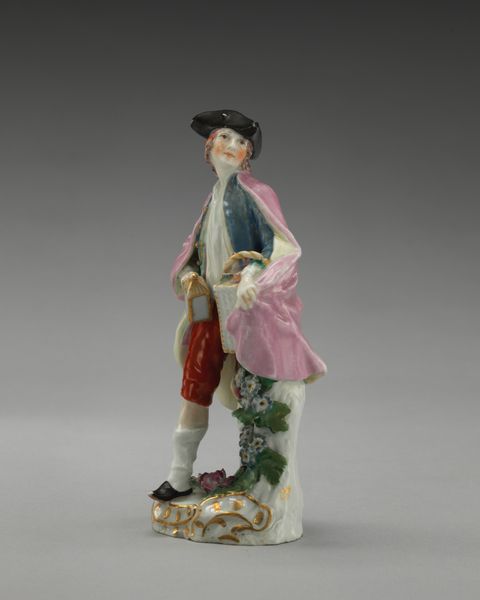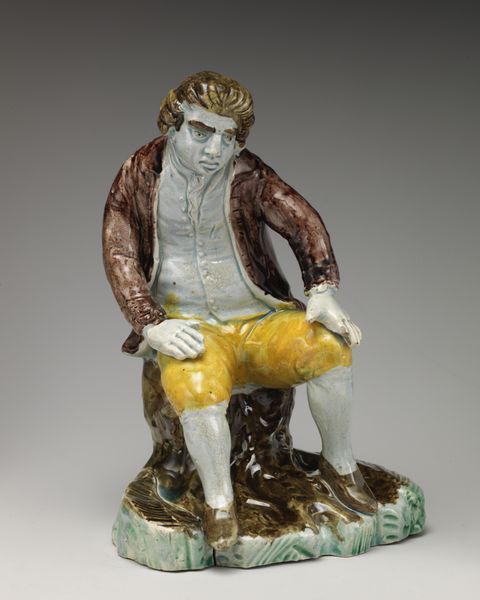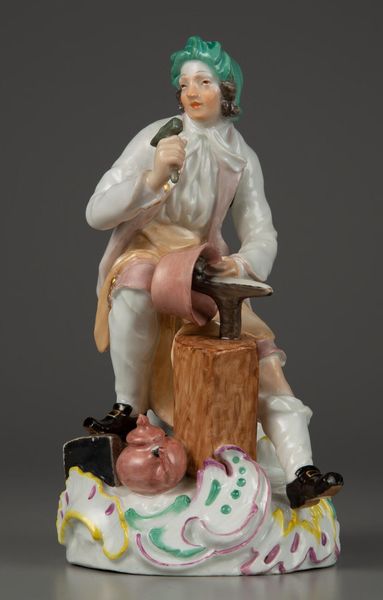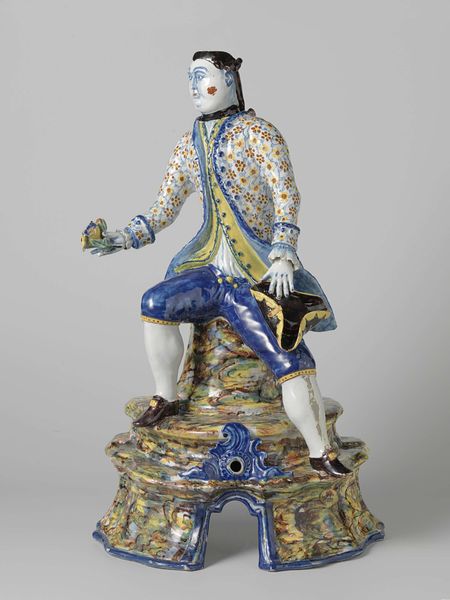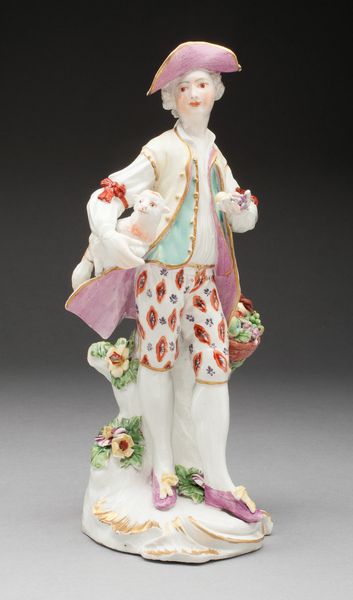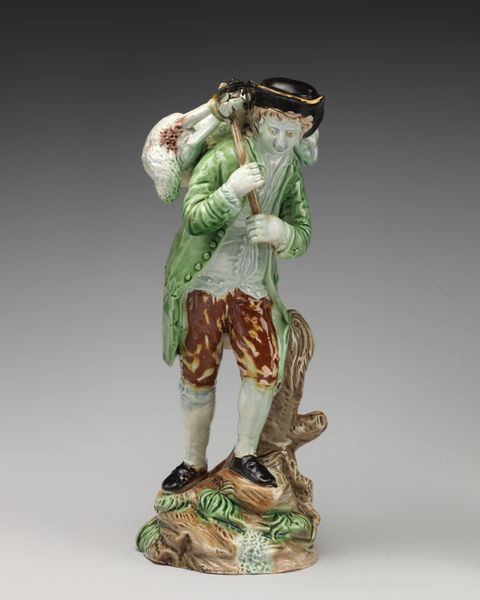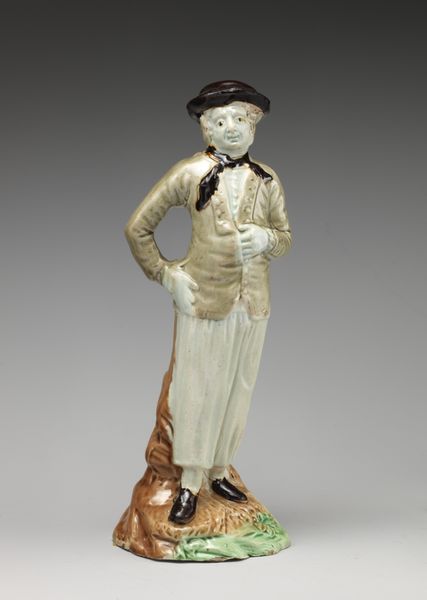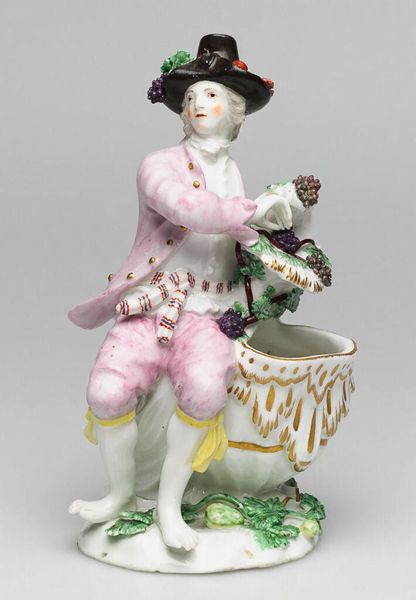
ceramic, sculpture
#
portrait
#
ceramic
#
sculptural image
#
figuration
#
sculpture
#
15_18th-century
#
history-painting
#
decorative-art
Dimensions: 30.8 × 13.3 × 13.3 cm (12 1/8 × 5 1/4 × 5 1/4 in.)
Copyright: Public Domain
Curator: Oh, he's got a certain theatrical flair, doesn’t he? Like a porcelain figurine escaped from a slightly bonkers opera. Editor: Indeed. This is the “Figure of Geoffrey Chaucer,” dating to around 1790 and created by the Staffordshire Potteries. It resides here at the Art Institute of Chicago. What we have here is lead-glazed earthenware, mass produced using molds to resemble famous characters or people. Curator: Earthenware… Ah, that makes sense. It's a world away from, say, Carrara marble, isn't it? Yet, somehow, it holds a playful spirit. I mean, look at those star-dotted pantaloons! Editor: This particular form of ceramic ware made in Staffordshire gained popularity through the labor processes involved. By using molds they could increase production, reduce waste, and the end consumer benefitted. Of course, what makes something art rather than merely production is always a touchy subject. Curator: Touchy indeed! Yet these mold marks—part of the industrial making process you described—also contain so much history; how the sausage, or in this case, Chaucer, gets made! There’s a beauty in the flaws, don't you think? Plus, imagine him sitting on a mantelpiece amongst porcelain sheep. It adds a certain…gravitas? Editor: "Gravitas" is one word, considering the flamboyance. It reflects something about how cultural icons were being consumed—digested, even—by the rising middle classes of the 18th century. Chaucer made into decor, isn't that a statement about labor, literacy, and commodification. Curator: Goodness, you're right, aren't you? I saw a charming bauble; you're highlighting social shifts! Perhaps the "Canterbury Tales," at least in part, were literally brought down to earth for a mass audience, placed on the shelf with the best silver and china. How about that! Editor: A perfect point on which to ponder these questions. From mass-produced figure to enduring question; it does seem a fitting note. Curator: Yes! So wonderfully thought provoking for a dusty old sculpture. It's what keeps things interesting!
Comments
No comments
Be the first to comment and join the conversation on the ultimate creative platform.
